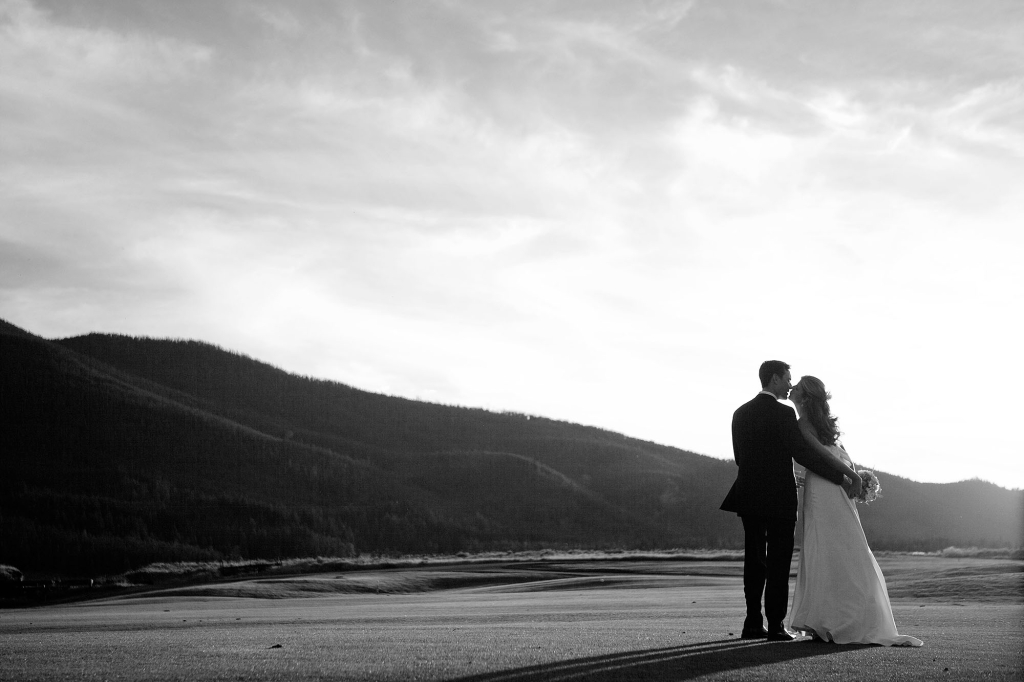My friend Christy is attending the wedding of a family member next weekend. The bride and groom couldn’t afford to hire a professional wedding photographer, so they hired an inexperienced new photographer. Then a few days ago, that photographer got nervous, and canceled on her clients just two weeks before the wedding. That’s just horrible.
Apparently the bride and groom are unable to pay for anyone else. They asked Christy to help. Christy is an incredibly kind person who agreed to shoot the wedding, even though she is not a photographer and has never done anything like this.
Ordinarily, when someone contacts me and says, “My friend can’t afford a photographer, so I’m thinking of shooting her wedding. Do you have any advice for me?” I reply, “My advice is to say no.” I mean it. Shooting a wedding is a difficult and stressful responsibility, and you risk lifelong disappointment for the couple if the photos do not turn out.
But when Christy found herself in this situation, with a family member needing help at the last minute, I could empathize with her decision. Before I was a professional photographer, I found myself helping friends and family in need, too. I’m sure lots of other amateurs have been in this situation. After all, I understand that not everyone can afford to hire a photographer. After today’s conversation, I’ve decided to write a list of tips that could help people like Christy.
These are NOT my tips for professional photographers or new photographers who are starting a business. You can see my advice for new photographers here: How to Get Started in Wedding Photography.
These are my tips for amateurs who have no intention of becoming professional photographers, and are just trying to help desperate friends. Disclaimer: This information will not prepare you to become a professional, and it won’t guarantee that you’ll do a good job of shooting a wedding. But it could help you get through the experience.
How to Shoot a Wedding if You’re Not a Photographer
Before the wedding day
1. Say no.
Encourage the couple to cut other costs and hire a professional photographer. If they want friends and family to help them save money, suggest that they ask people to contribute items like food, cake, decorations, flower arrangements, and music playlists. Those items are temporary and will be gone at the end of the wedding day. If the bride and groom can find enough money to pay for a professional photographer, they will have beautiful photographs for the rest of their lives. If they absolutely can’t find enough money to hire a professional, let a different friend to take on that responsibility.
If you must say yes:
2. Manage their expectations.
Communicate clearly to the couple what you are able to do. What is your skill level? What equipment do you have? What kind of photos can they expect to get? If you make it clear from the beginning what you will be able to do for them, they shouldn’t be disappointed when you deliver exactly that.
3. Get it in writing.
I’m no lawyer, so I won’t give advice about contracts (except that contracts are GOOD), but make sure you have in writing what all parties have agreed. Do what you need to do to cover yourself legally. Lawsuits are scary. I’ll leave it at that and let you decide how safe you want to be.
4. Get a schedule of the day from the couple.
Make sure you know the time and location of every event that you need to photograph. Plan a time for posed photos, and have that time approved by the couple. Write down a detailed schedule with addresses and emergency contact numbers, and carry it with you all day at the wedding.
5. Get a backup camera, an external flash, and lots of batteries and memory cards.
It is very possible that your camera will malfunction, break, or get stolen on the wedding day. Have a second camera available just in case. An external flash on the hotshoe is a much better light source than a pop-up flash. Make sure you have extra batteries and memory cards, too. If you don’t own the necessary equipment, rent it from a place like BorrowLenses.com, and have the bride and groom pay for the rental.
On the wedding day
1. Make them look pretty.
This is the number one rule for your photographs. It doesn’t matter how skillful you may be — if the people don’t look good, they won’t like the picture. Pay attention to the people you are photographing, and make sure they don’t have double chins, messed up hair, food in their teeth, smeared make up, wide arms, visible cellulite, etc. Shooting from slightly above is usually a flattering angle. Shooting from below usually makes people look fatter. If you are posing people, adjust their hair and lapels. They really want to look good in these photos.
2. Get the shot, and then get a better shot.
During an important moment, make sure you get a photo that is well exposed and in focus. Once you know you got the shot, you can experiment with creative angles. Don’t risk missing something important because you were trying to be artsy. Leave that to the pros who can attend to lots of different things at the same time.
3. Take the posed portraits outside in open shade.
Avoid posing people at the altar. It’s very difficult to light altar photos without professional equipment. Take the people outside, and pose them under an evenly shaded tree or in a doorway. Make sure they are facing the light, but not in the direct sunlight.
4. Take the essential formal portraits.
Ask the couple before the wedding day which portraits they want. Each portrait will require 3-5 minutes, so make sure there is enough time in the schedule for that. If you have the time, take lots of group photos, because they will be treasured by the families. In my experience, these are the essential portraits, but take more if you can:
The bride and groom, full length (this is arguably the most important photo of the day)
The bride and groom with groom’s family
The bride and groom with bride’s family
The bride and groom with wedding party
5. Take the essential candids.
Each wedding is different, of course, so be sure to ask the couple if there are any special traditions or details that they don’t want you to miss. In my experience, these are the key candid photos that most couples will expect to have, but shoot more if you can:
The bride getting ready
Each of the members of the wedding party entering the ceremony
The bride walking down the aisle
The ring exchange
The kiss
The bride and groom leaving the ceremony
The signing of the marriage license
The bride and groom arriving at the reception
The first dance
The parent dances
The toasts
The cake cutting
6. Keep your poses simple.
Let people put their arms around each other in a way that feels comfortable and natural to them. My general rule is that if the people feel natural, the picture looks natural. If they feel awkward, it looks awkward. Avoid anything gimmicky. A gimmick will go out of style very quickly, if it hasn’t already. And it probably has.
7. Bounce the flash off the ceiling.
Use an external flash unit instead of a pop-up flash. Turn the flash so that it bounces off the ceiling at an angle behind you. The ceiling acts as a diffuser, and the angle creates natural-looking directional light. Practice using the flash like this before the wedding day. Compare a photo taken with direct flash to one taken with bounced flash, and you’ll see a drastic difference. Be aware, though, that bounced flash is much more difficult with dark or high ceilings. Be aware of the conditions you have available on the wedding day.
8. Manage your own expectations.
Shooting a wedding is hard work. If they expected professional results, they would have hired a pro. Do what you can, and don’t expect to work magic. Dance and enjoy time with your friends and family — you’re a guest, and you get to have a little fun, too.
If you’re a bride or groom who is considering having an amateur friend shoot your wedding:
Reconsider. Try to rearrange your budget to accommodate a professional photographer. Wedding photography is difficult, and there is a huge quality difference between skilled and inexperienced photographers. If that is not an option, be sure to do something special for the friend who does this for you. It is hard work.




Excellent tips! You should do a beginner series for SLR too.
I plan to do lots of Photography 101 stuff, as well as tips for pros. Let me know if there’s anything in particular you’d like to know about your SLR. 🙂